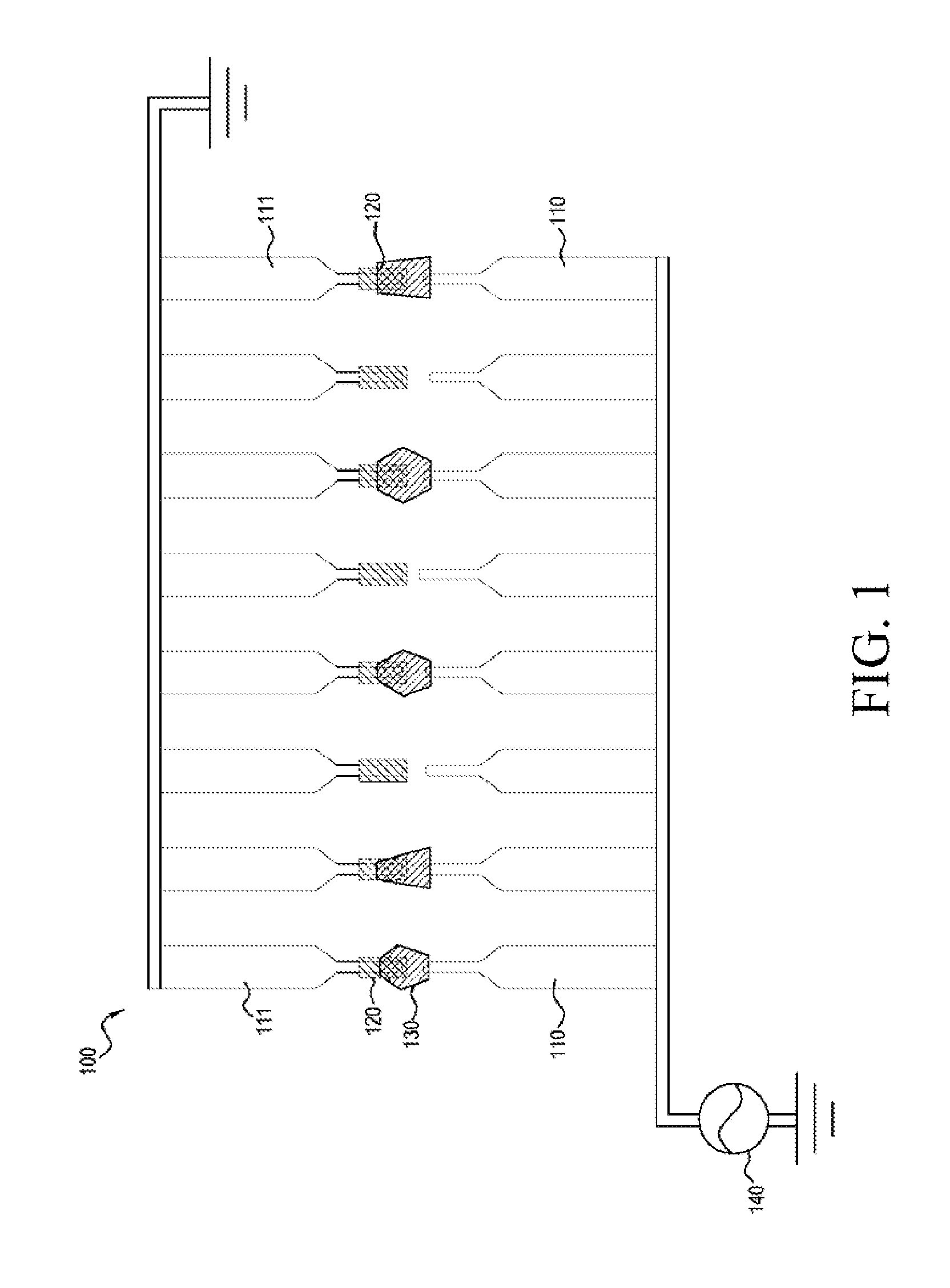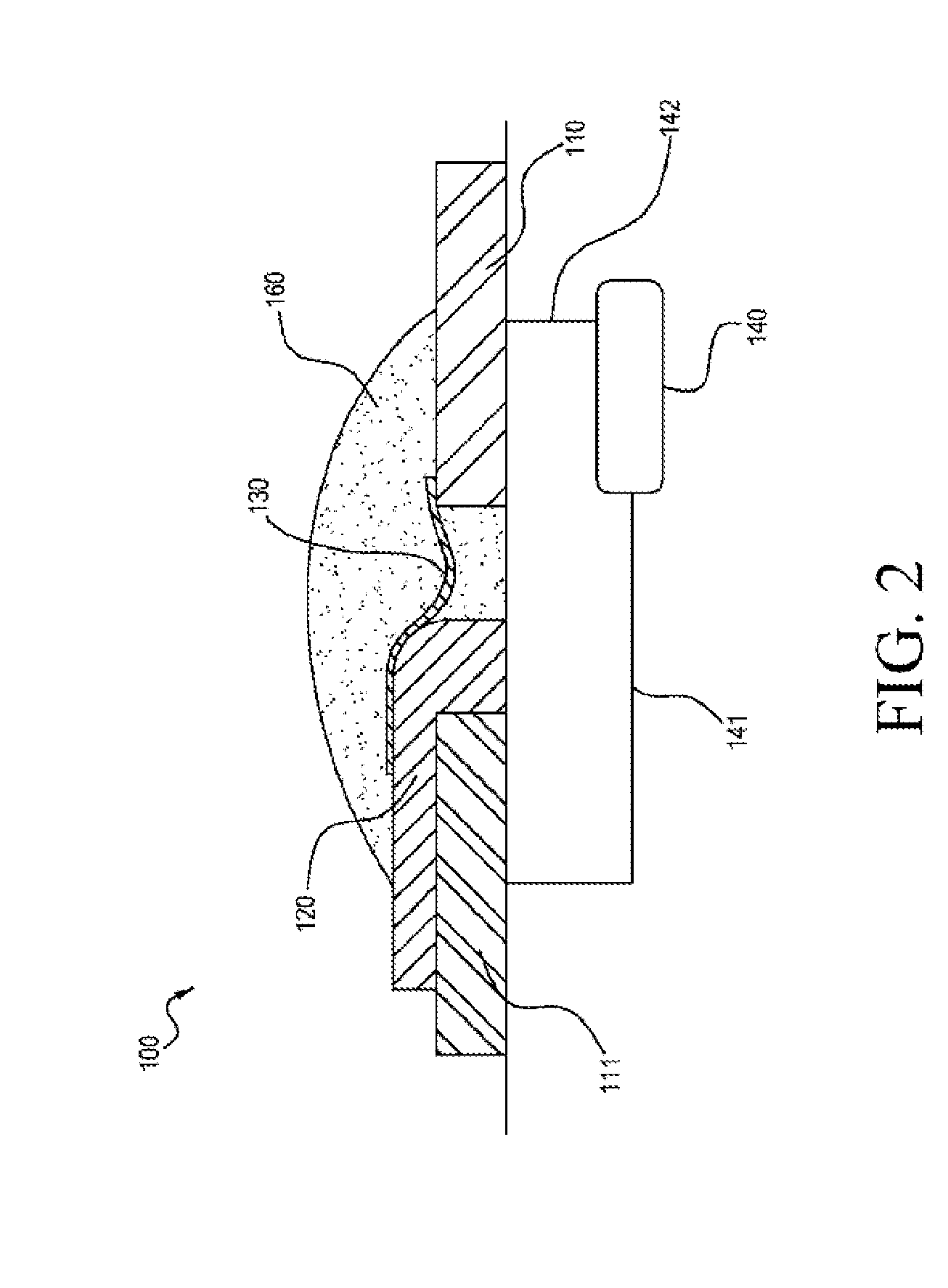Graphene screening and separation method and device
a graphene and separation method technology, applied in the direction of fluid pressure measurement, liquid/fluent solid measurement, peptide, etc., can solve the problems of inability to display contrast, inability to achieve raman spectra, and inability to distinguish between two layers and a few layers of graphene sheets
- Summary
- Abstract
- Description
- Claims
- Application Information
AI Technical Summary
Benefits of technology
Problems solved by technology
Method used
Image
Examples
Embodiment Construction
[0026]FIG. 1 and FIG. 2 show a graphene screening and separation device 100 illustrating an embodiment of the present invention. The graphene screening and separation device 100 includes at least one pair of electrodes, for example, multiple pairs of electrodes are arranged in an array, which is referred to as array electrodes. Each pair of electrodes consists of first and second electrodes 111, 110, and is covered by a graphene suspension 160. In this embodiment, the first and second electrodes 111, 110 can be metal electrodes.
[0027]Each pair of electrodes (the first and second electrodes 111, 110) can be independent and is electrically coupled to a time-varying voltage source 140 (i.e., AC power source) by wires 141, 142, so as to generate a dielectrophoretic force between the first and second electrodes 111, 110, to adsorb a graphene sheet 130 in the graphene suspension 160. The dielectrophoretic force is mainly generated from the graphene sheet with polarity asymmetrically induc...
PUM
| Property | Measurement | Unit |
|---|---|---|
| thicknesses | aaaaa | aaaaa |
| thicknesses | aaaaa | aaaaa |
| thicknesses | aaaaa | aaaaa |
Abstract
Description
Claims
Application Information
 Login to view more
Login to view more - R&D Engineer
- R&D Manager
- IP Professional
- Industry Leading Data Capabilities
- Powerful AI technology
- Patent DNA Extraction
Browse by: Latest US Patents, China's latest patents, Technical Efficacy Thesaurus, Application Domain, Technology Topic.
© 2024 PatSnap. All rights reserved.Legal|Privacy policy|Modern Slavery Act Transparency Statement|Sitemap



